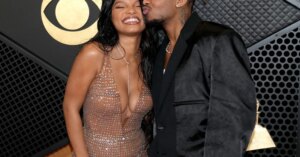7 Music Videos Banned For Being Too Controversial
For decades, music videos have contributed to the overall listening experience of songs and albums. Artists often use them as an effective medium to make strong statements, pass important messages, or explicitly express themselves. However, these music videos sometimes cross the thresholds of what is deemed fit for television consumption and ultimately end up banned. Over the years, upon their release, several music videos have sparked controversy. Some reasons for their bans include explicit sexual content, obscenity, violence, or disturbing messages. From Madonna’s “Justify My Love” to Rihanna’s “S&M,” here are seven such music videos that have been deemed unfit for television.
Duran Duran – “Girls On Film” (1981)
The controversial music video for Duran Duran’s third single was directed by Godley & Creme. The uncensored version of the “Girls on Film” music video contained provocative imagery. It featured scenes of scantily clad women engaging in activities, often of a sexual nature, including mud wrestling and pillow fighting. Upon its release, the video faced heavy controversy and was subsequently banned. Evidently, the original version of the video was considered too risqué for mainstream television. Following the ban, Duran Duran submitted a new and heavily edited video version for airplay.
Nine Inch Nails – “Closer” (1994)
The “Closer” music video is widely regarded as one of Nine Inch Nails’ most iconic and controversial visuals. It is characterized by its dark and provocative visual style. In addition, the video combines surreal and disturbing imagery with industrial and gothic aesthetics, exploring themes of mortality, sexuality, and religion. As a result, although it complements the song’s themes, the music video is quite unsettling. The music video for “Closer” is certainly one of the most iconic banned music videos out there. Due to its explicit content and provocative imagery, it stirred up more than enough controversy after it dropped in 1994.
Robin Thicke – “Blurred Lines” (2013)
Upon its release, the “Blurred Lines” music video faced widespread criticism for its objectification of women. The video was perceived as promoting a disrespectful, non-consensual, and misogynistic message. Additionally, many argued that the song’s NSFW lyrics promoted rape culture. YouTube took down the uncensored version of the video soon after it was uploaded. The censored video featuring the models in clothes stayed up on the platform. Despite the controversy, or perhaps partially due to it, “Blurred Lines” became a massive commercial success.
Rihanna – “S&M” (2011)
Rihanna’s music video for “S&M,” like many other banned music videos, was wildly popular when it premiered in 2011. The video presents a visually striking world where Rihanna embraces her sexuality while critiquing the media’s obsession with scandal. It is characterized by bold colors, avant-garde fashion, and provocative imagery. Furthermore, the video is filled with sexual innuendos and contains sadomasochistic imagery. Soon after its premiere, the music video for “S&M” was banned in 11 countries. Despite the backlash it received, the video’s bold style significantly contributed to the singer’s image as an artist.
M.I.A. – “Born Free” (2010)
The “Born Free” music video is a highly controversial and provocative piece directed by Roman Gavras. It explores themes of violence, discrimination, and persecution. The video was shot as a nine-minute short film featuring graphic content, including disturbing and violent images. While the video was intended to make a powerful statement against the brutality faced by marginalized groups, it was met with much criticism. “Born Free” is one of several music videos banned in multiple countries. It was also removed from YouTube within its first 24 hours of being on the platform.
Kanye West – “Monster” (2010)
Kanye West is one of the most controversial artists around. However, when he dropped the iconic music video for “Monster” in 2010, the dark themes it contained still came as a shock to many. Upon its release, the horror-themed video proved too much to handle for many viewers. Subsequently, it was banned from YouTube, and West took it off his YouTube channel entirely soon after. Nicki Minaj’s verse on the song and appearance in the music video received widespread praise, but it was not enough to save the video.
Madonna – “Justify My Love” (1990)
Throughout her career, the Queen of Pop, Madonna, has been closely affiliated with controversy, and the singer embraces it wholly. The music video for “Justify My Love” was so provocative that MTV outrightly refused to broadcast it on the day it was set to premiere. Featuring passionate and intimate sensual scenes shot in black and white, the video explores themes of sexuality and desire. Despite all the flack she received for making such a video, Madonna defended it, calling it a celebration of sex. MTV banned it from being broadcast on their channel, but “Justify My Love” was shown successfully on other cable networks. Over the years, it has come to be regarded as one of Madonna’s most iconic music videos.
[via]





